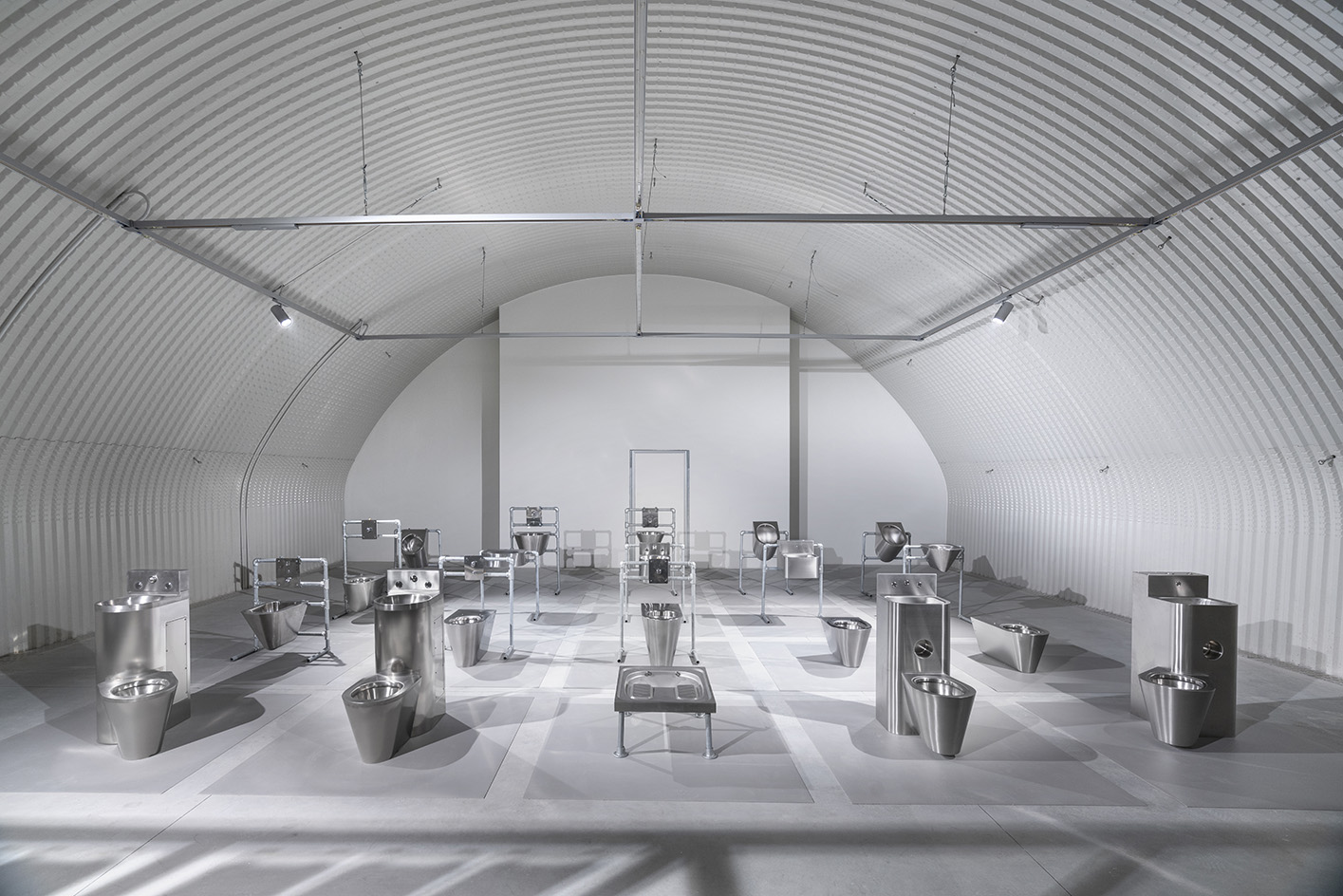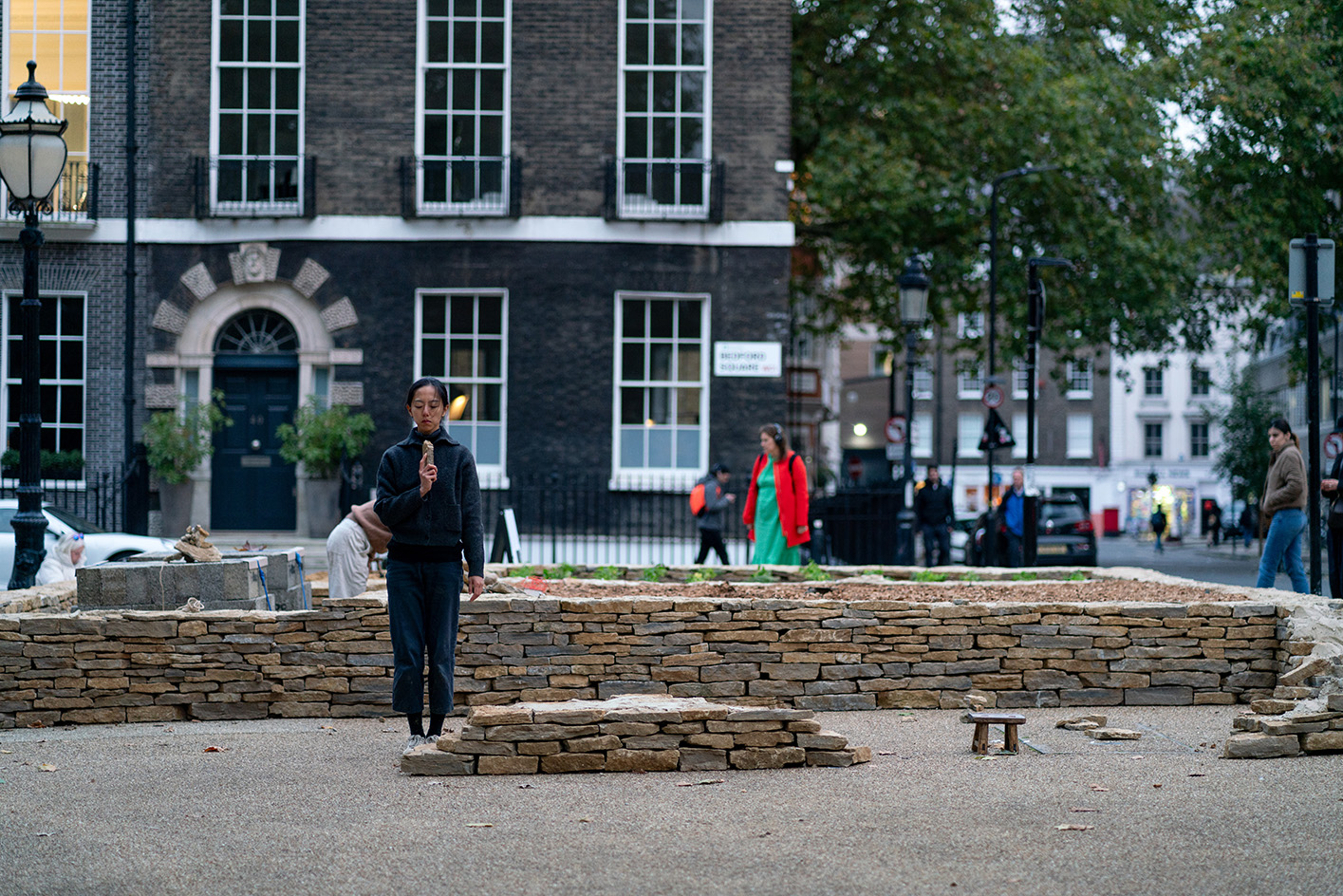Cave Bureau uses geology to refocus and understand the relationship between architecture and nature
Cave Bureau’s exhibition at the Louisiana Museum of Modern Art opens in Denmark, marking the latest – and last – entry in the gallery's The Architecture Studio series

‘The Anthropocene Museum’ by Cave Bureau is the sixth and final instalment in the family of exhibitions titled ‘The Architect’s Studio’ held at the Louisiana Museum of Modern Art in Denmark. Since the series’ inception in 2017, visitors have been able to get to know international architects who are challenging the field at its core. Over the years, this has opened up a discussion, not only about where building culture is heading, but also what architects are able to work with, and how.
The final iteration of this theme, by the Kenya-based practice, is no different. Working at the boundaries of architecture, it is a quiet presentation of model, print and visual media loaded with social and cultural iconography; presenting a real cross-sectional view of the African condition as it begins to disseminate an approach towards a decarbonised and decolonised mode of operation.

Cave Bureau at the Louisiana Museum of Modern Art
Taking nature as its starting point, ‘The Anthropocene Museum’ searches for an understanding of ‘Origin’ – or a return to origin. It begins by recording and analysing natural structures that are millions of years old; specifically, Mount Suswa in Kenya. The studio’s interest in an undocumented past (the mountain itself had never been documented through architectural drawings before) sets in motion thoughts about what merits recording in the history of architecture, and about the coexistence of architecture and nature. This new learning is then re-presented as a way of rethinking architectural discourse.
Using the cave as a springboard to narrate unrepresented histories of their own people and compatriots, Cave Bureau takes learnings from this research to reveal African notions of custodianship and care. The projects presented are gentle interventions in the landscape that support Indigenous people and the rhythms of nature while intending to relate to a modern Africa, and to heal fissures in the culture. The ‘Cow Corridor’, for example, is a restoration piece that seeks to reestablish the Maasai grazing routes through the capital Nairobi, which has been forbidden territory for cows since the British partition of the country.

Not simply a passive act of recording, many of the objects on display present an unavoidable confrontation with an uncomfortable past. The installation ‘The Door of No Return’ for example, is a version of the gate through which West African slaves passed before departing by ship to the Danish West Indies. Using stone sourced from a limestone quarry in Faxe, Denmark, it references the limestone found in the Shimone Caves of eastern Kenya.
The exhibition culminates in an ambitious full-size attempt to reproduce the spatiality and materiality of the caves. Titled ‘Cave’ woven in rattan, it is inspired by pre-colonial craftsmanship and building techniques and is the result of a collaboration with The Centre for Information Technology and Architecture at the Royal Danish Academy in Copenhagen.

According to Cave Bureau founders, architects Kabage Karanje and Stella Mutegi, the architecture of the future must rely on knowledge of geology and connection to nature, as it traditionally has done in Africa. The architecture through which we have built our society in modern times and the way we view space, borders, cities and collective ties have to be reassessed by taking a critical stance towards anthropocentrism – the epoch within which our activity as humans on this planet has bred near irreversible shifts in our ecology.
Wallpaper* Newsletter
Receive our daily digest of inspiration, escapism and design stories from around the world direct to your inbox.

‘Geology provides us with a tool to re-inscribe, to re-orientate and to relate to new ways of being on this planet; to realise that we are background,' says Karanje, director at Cave Bureau.
With re-orientation comes the potential for collective healing, and the potential of the continent to imagine its own future – to rewind in order to unpick and return with the appropriate knowledge that informs the now, and next.

-
 Put these emerging artists on your radar
Put these emerging artists on your radarThis crop of six new talents is poised to shake up the art world. Get to know them now
By Tianna Williams
-
 Dining at Pyrá feels like a Mediterranean kiss on both cheeks
Dining at Pyrá feels like a Mediterranean kiss on both cheeksDesigned by House of Dré, this Lonsdale Road addition dishes up an enticing fusion of Greek and Spanish cooking
By Sofia de la Cruz
-
 Creased, crumpled: S/S 2025 menswear is about clothes that have ‘lived a life’
Creased, crumpled: S/S 2025 menswear is about clothes that have ‘lived a life’The S/S 2025 menswear collections see designers embrace the creased and the crumpled, conjuring a mood of laidback languor that ran through the season – captured here by photographer Steve Harnacke and stylist Nicola Neri for Wallpaper*
By Jack Moss
-
 Milan Design Week: Dropcity challenges detention space design with 'Prison Times'
Milan Design Week: Dropcity challenges detention space design with 'Prison Times'Dropcity's inaugural exhibition 'Prison Times – Spatial Dynamics of Penal Environments', opens a few days before the launch of Milan Design Week and discusses penal environments and their spatial design
By Ellie Stathaki
-
 Step inside Rains’ headquarters, a streamlined hub for Danish creativity
Step inside Rains’ headquarters, a streamlined hub for Danish creativityDanish lifestyle brand Rains’ new HQ is a vast brutalist construction with a clear-cut approach
By Natasha Levy
-
 From a mobile pub to a thatched canopy: Japanese architecture and craft explored at AA show in London
From a mobile pub to a thatched canopy: Japanese architecture and craft explored at AA show in London'Distillation of Architecture', a new AA show in London, pairs architects with materials and makers in an exploration of craft through the Japanese lens
By Ellie Stathaki
-
 This restored Danish country home is a celebration of woodworking – and you can book a stay
This restored Danish country home is a celebration of woodworking – and you can book a stayDinesen Country Home has been restored to celebrate its dominant material - timber - and the craft of woodworking; now, you can stay there too
By Ellie Stathaki
-
 Greenland through the eyes of Arctic architects Biosis: 'a breathtaking and challenging environment'
Greenland through the eyes of Arctic architects Biosis: 'a breathtaking and challenging environment'Danish architecture studio Biosis has long worked in Greenland, challenged by its extreme climate and attracted by its Arctic land, people and opportunity; here, founders Morten Vedelsbøl and Mikkel Thams Olsen discuss their experience in the northern territory
By Ellie Stathaki
-
 The Living Places experiment: how can architecture foster future wellbeing?
The Living Places experiment: how can architecture foster future wellbeing?Research initiative Living Places Copenhagen tests ideas around internal comfort and sustainable architecture standards to push the envelope on how contemporary homes and cities can be designed with wellness at their heart
By Ellie Stathaki
-
 Denmark’s BIG has shaped itself the ultimate studio on the quayside in Copenhagen
Denmark’s BIG has shaped itself the ultimate studio on the quayside in CopenhagenBjarke Ingels’ studio BIG has practised what it preaches with a visually sophisticated, low-energy office with playful architectural touches
By Jonathan Bell
-
 Architectural Association's newest show uncovers the architectural legacies of rural China's lost generation
Architectural Association's newest show uncovers the architectural legacies of rural China's lost generationThe Architectural Association’s ‘Ripple Ripple Rippling’ is not your typical architecture show, taking an anthropological look at the flux between rural and urban, and bringing a part of China to Bedford Square in London
By Teshome Douglas-Campbell